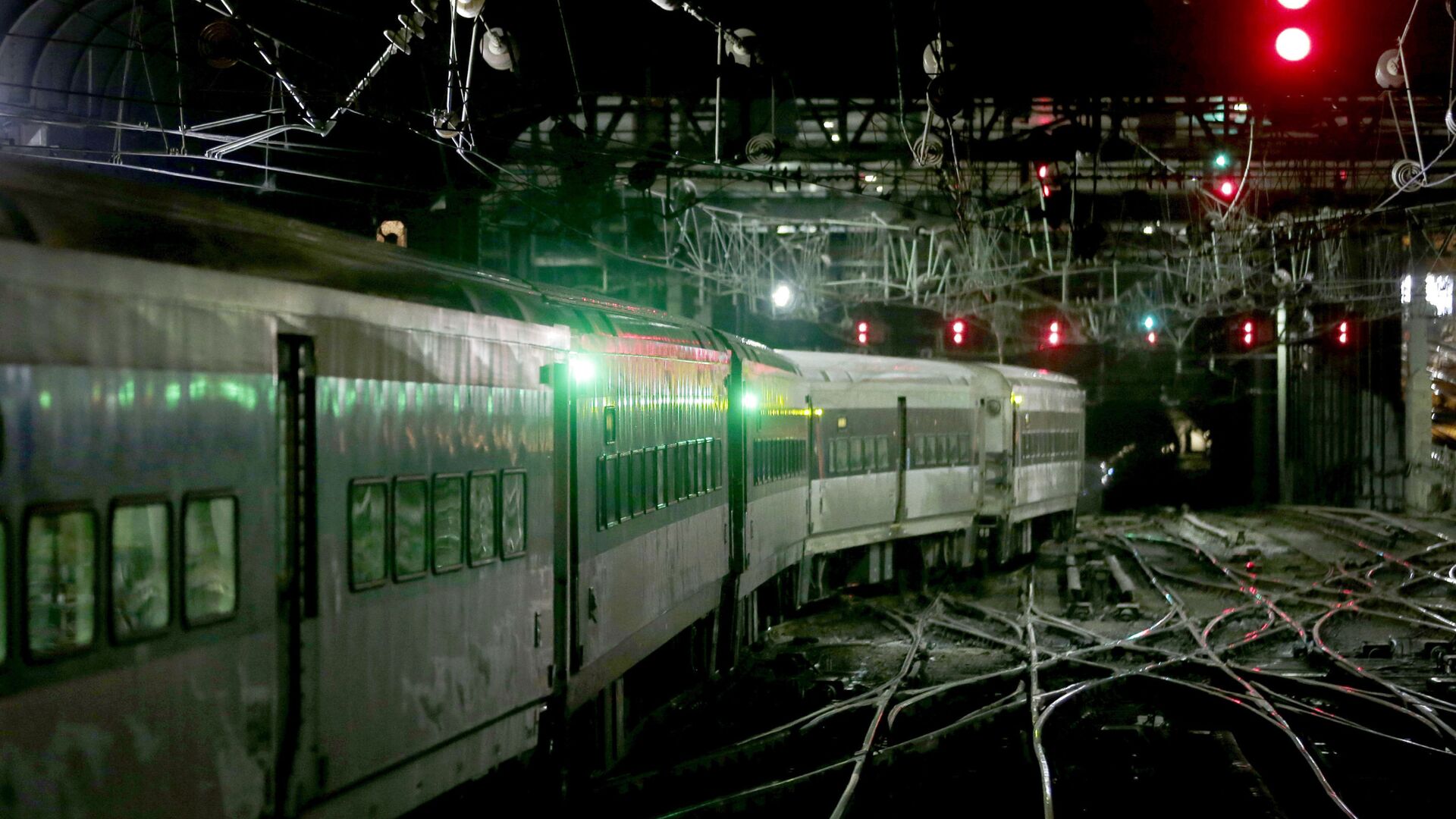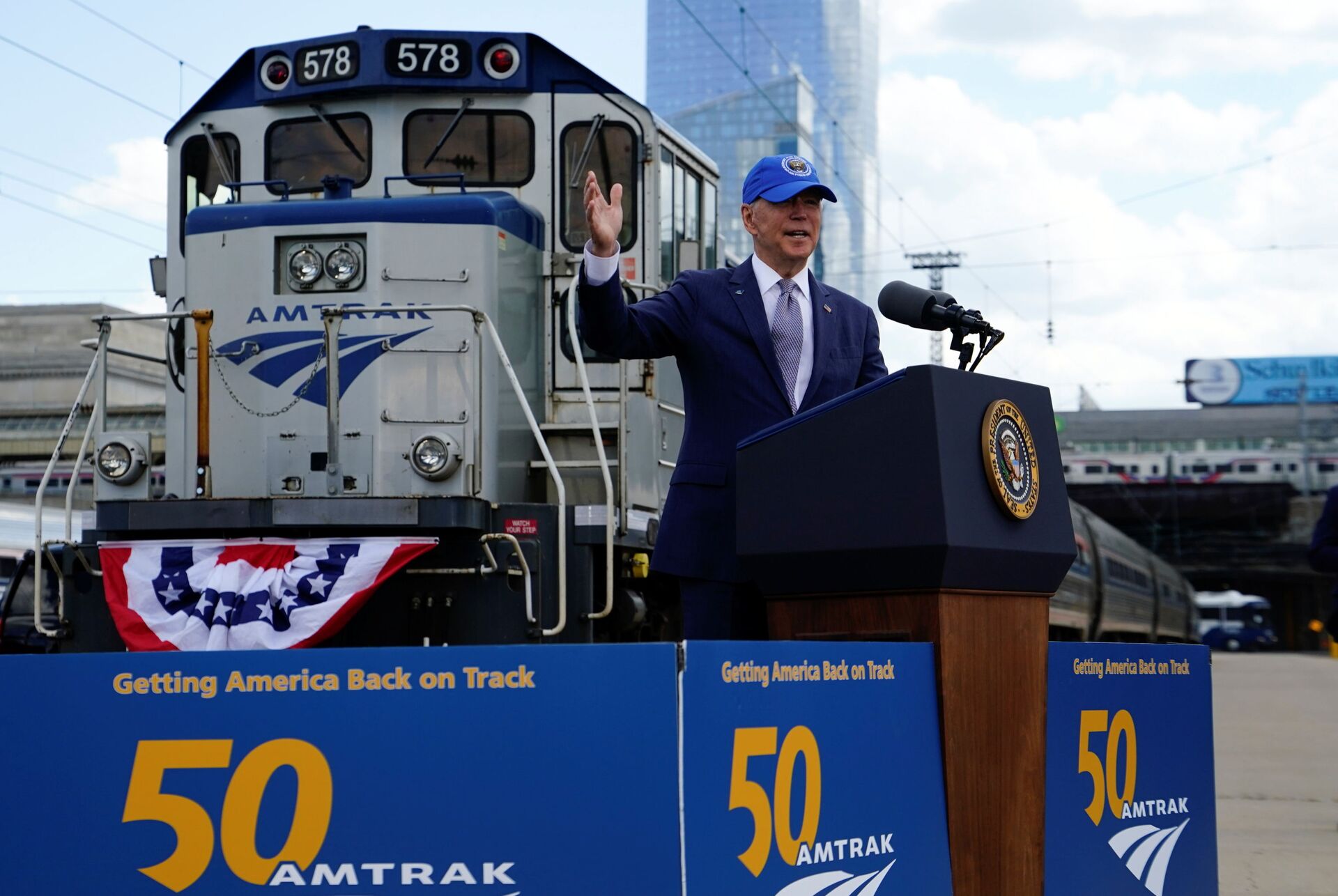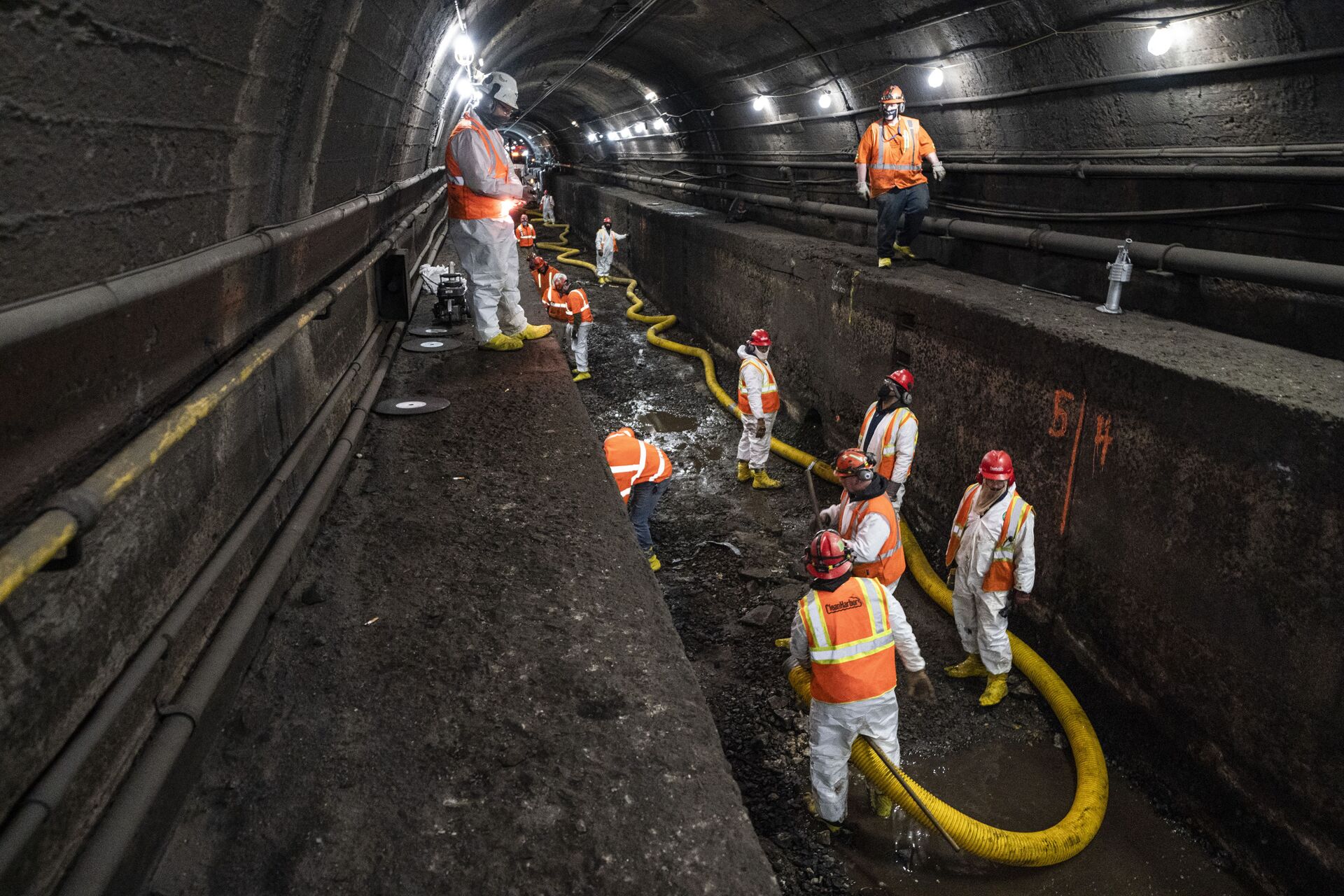Is Investing Billions of Dollars in Amtrak a Waste of Money or is Joe Biden on the Right Track?
14:16 GMT 05.08.2021 (Updated: 14:27 GMT 01.03.2022)

© AP Photo / Seth Wenig
Subscribe
At the weekend the US Senate finally passed a US$1.2 trillion infrastructure bill which is a cornerstone of President Joe Biden's domestic policy. A sizeable slab of money will be invested in Amtrak and particular on trains between Boston, New York and Washington DC.
In the 19th century successive US presidents believed it was the country’s “manifest destiny” to conquer all points from Maine to California and one of the key drivers of westward expansion was the railroad.
Thousands of miles of track were laid - often at great human cost - between the East Coast, the Midwest and finally all the way to the Pacific Ocean.
But between 1920 and 1970 the railroad lost out as cars became the preferred mode of transportation for commuters, planes took over the long-distance passenger market and trucks replaced freight trains as the number one means of delivering goods.
It’s no secret that I love Amtrak. It’s one of the reasons I’m excited about the Bipartisan Infrastructure Deal, which includes the largest investment in passenger rail since Amtrak’s founding. We’re going to modernize our rail systems and expand services across the country. pic.twitter.com/whL2z21O7a
— President Biden (@POTUS) August 3, 2021
In 1971 the National Railroad Passenger Corporation - better known as Amtrak - was created by President Richard Nixon and took over 20 railroads, many of which were on the verge of bankruptcy, in order to ensure that passengers could still travel by train from Chicago to Miami or Seattle to San Diego.
In reality the majority of Amtrak’s passengers were commuters or those travelling within the same state but over the next five decades the nation’s passion for cars meant the company struggled to compete and only survived because of federal subsidies.
The lack of cash also meant Amtrak was unable to reinvest in its infrastructure which meant that by 2021 it was in a lamentable state, with tunnels often waterlogged, tracks broken and station platforms in disrepair.
The infrastructure bill, a cornerstone of President Joe Biden's sweeping domestic agenda, is about 2,700 pages long and includes funding for everything from drinking and waste water infrastructure, bridges and roads, electric buses and faster broadband.

U.S. President Joe Biden and first lady Jill Biden visit Philadelphia
© ERIN SCOTT
But one of the marquee items is a ton of investment for Amtrak, especially in the North East Corridor, that heavily-populated, affluent and influential slice of America between Boston, Massachusetts and Washington DC.
Biden, who regularly used the train to commute to Washington from his home in Delaware, is a big fan of railroads and needed little persuasion from Bill Flynn, who took over as Amtrak CEO last year.
In total Amtrak received US$66 billion and much of that will go on catching up with an extensive maintenance backlog nationwide.
But there will be plenty of money to spend on new rolling stock and on extending Amtrak’s network.
Earlier this month, having assumed the bill would pass Congress, Amtrak announced plans to invest US$7.3 billion in a fleet of 83 new trains for the North East Corridor, including its first electric-hybrid locomotives.
Amtrak CEO Bill Flynn said: "These new trains will reshape the future of rail travel by replacing our aging 40-to-50-year-old fleet with state of the art, American-made equipment."
The trains will be built at Siemens’ plant in California and Amtrak hopes they will help to add 1.5 million passengers annually.
Amtrak says the North East Corridor is “bursting at the seams” and they have identified five key projects which would enable them to run more trains.

Amtrak workers perform tunnel repairs to a partially flooded train track bed in Weehawken, New Jersey.
© AP Photo / John Minchillo
These include the Baltimore & Potomac Tunnel, the Susquehanna River bridge, the Hudson Tunnel project, the Portal Bridge and the renovation of stations in New York, Washington DC, Philadelphia and Baltimore.
The Hudson Tunnel would involve digging two new tunnels between New York city and Hoboken, New Jersey, to carry Amtrak trains. This would enable the current North River Tunnel to be closed for a year to carry out essential repairs as a result of damage caused by Storm Sandy in 2012.
Amtrak must, within 1 year, develop (and publish) a greenhouse gas emissions reduction and energy plan , that includes Net-Zero for North East Corridor (aka: electrify NYP to Albany)
— Jean-François Mezei (@jfmezei) August 3, 2021
Plan should also include net-zero for all its operations. pic.twitter.com/9N8JTk4CjL
The Hudson Tunnel project alone would cost US$11.6 billion and most of the funding for it will come from the Port Authority of New York and New Jersey.
Amtrak also announced, in May, ambitious plans to create 30 new inter-city passenger routes and among the destinations which will now be reachable will be Las Vegas, Nevada, Columbus, Ohio, and Nashville, Tennessee.

An Amtrak train in St Louis, Missouri
© AP Photo / Charlie Riedel
This is all part of adjusting Amtrak’s raison d'etre from its current role of providing "a performance level sufficient to justify expending public money" to "meeting the intercity passenger rail needs of the United States."
Part of the Biden administration’s interest in Amtrak is that it thinks it could help in reducing carbon emissions in the US, which are primarily driven by automobile emissions.
S/o to @Amtrak wifi and our jobs that embrace remote/flexible work. Taking meetings from the Northeast Regional cafe car all day 💙 pic.twitter.com/dR0cdcrGUe
— Danny Drees (@dannypdrees) August 3, 2021
The engine which drove the rapid expansion of the United States could help a new generation tackle climate change.
The railroad could be back in business.

